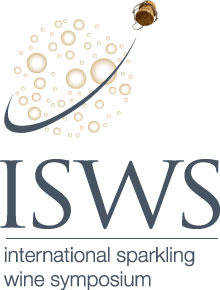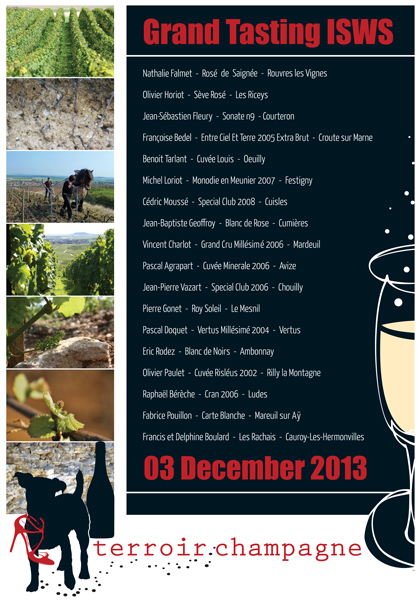The tasting was extremely interesting as it gave a great overview of what exciting projects are being undertaken in the fringes of sparkling wine world. I was particularly happy to see that the two Champagne’s Essi had chosen – the excellent Tarlant La Vigne d’Or 2003 (single vineyard 100% Meunier) and Henri Abelé Le Sourire de Reims 2002 were both terroir driven wines.
It was furthermore obvious from the day’s previous sessions that everybody was at least a little convinced that terroir does matter in sparkling wine . I say this as it seemed that the whole symposium was about finding alternatives to Champagne – which is still considered to be the holy grail of sparkling wine.
If the method of production and often the grape varieties used are similar this can only mean that terroir does matter as the unique combination of growing conditions, soil structure and weather in Champagne seems to be adding the extra special fairy dust or Champagne magic. In an attempt to unravel this magic
Richard Smart underpinned his presentation on ‘The present and future sparkling wine producing areas in the world’ with climatic data to compare other regions with Champagne today and speculated on how global warming could bring a new sparkling wine mecca in New Zealand’s South Island.
Part of the reason I had decided to travel to the UK and attend the Symposium was this focus on terroir and in particular a specific session on terroir in sparkling wine. But unfortunately this session was a complete wash out. Instead of Tom Stevenson chairing a real real debate on the role of terroir in the elaborate sparkling wine making process – something he must at least slightly believe in as he seems to have different criteria to rate Champagne than the ones used to rate to other sparkling wines – the session consisted of 3 presentations on whether or not‘terroir is the most important factor to produce quality sparkling wine’. This completely baffled me as this exercise seems just as surreal as designers giving presentations on the fact that the color yellow is the most important element in making green… By this I mean that the speakers focused on something completely unrealistic – ie trying to define the most important factor in a very complex composition. Composition by definition means that several elements are needed for the end result and when one tries to dull a composition down to one element one is completely missing the point as far as I am concerned…
Anyway, many of you will know that I strongly believe that terroir can play a role in sparkling wine and more specifically in Champagne. This is why I felt that the Symposium would be a perfect place to hold my first ever ‘Terroir Champagne’ tasting. This tasting was an intro to the Champagne Terroir project I will publish in April 2014 – where I speak about all the different terroir wines in Champagne.For this first tasting I had picked 18 wines from different producers spread out over the whole Champagne area. Every producer I had picked works in a sustainable way in the vineyard focusing on making a living wine which expresses the essence of the place where it came from. Most of the wines I presented were either single vineyard wines, or the expression of a specific cru (village); only two wines were a blend across a few villages with similar soil compositions.
The idea was to show the differences and possible variety in the Champagne region by tasting an audience of sparkling wine experts traveling from south to north through the region. Over the last two years I spent here in Hautvillers I have realized that most renowned Champagne experts are not necessarily familiar with the diversity available in Champagne.
First of all most experts do not live in Champagne but only visit sporadically. Many of them do not speak French and generally they are most familiar with the large Champagne Houses (and their Cuvée Prestige) who dominate the export markets. By default this means that they have very little experience of single village (mono-cru) and single vineyard Champages. Most experts believe that there are common characteristics in Champagne (chalk soil, climate, hillside vineyards…) which make its wines stand out from the other regions but very few of them have a good understanding of the variety of terroirs in the region. It is a fact that even if Champagne’s terroir diversity is not dissimilar from Burgundy’s ‘climats’, that the prevailing idea has been that variety is less important as it will disappear in the blending process to divulge the House or vintage style. Whilst all of this applies for most of the prestigious Grand Marques, quite a few Vignerons Indépendants have chosen a different path and are choosing to make terroir wines – wines with a certain identity and footprint of the place they come from. This takes nothing away from the brilliant blending techniques of the great Chef de Caves – the wines they have created over the years have made the reputation of Champagne. However this more recent trend of making terroir wines is yet another way for Champagne to wine over and excite new consumers.


